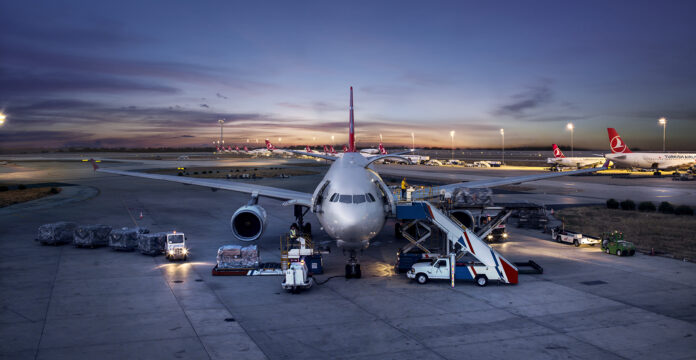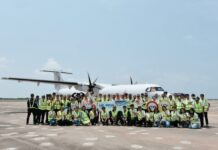

Global management consultants McKinsey have released an overview of global aviation’s performance during the pandemic, by subsector. Compared with passenger flights, airfreight essentially had a good pandemic.
The pandemic wreaked financial devastation across the aviation value chain, most notably for airlines. All subsectors reported massive losses in 2020, except for freight forwarders and cargo airlines. Although air cargo soared on the tailwinds of increased demand and high freight rates, airlines continued be the worst performers in the aviation sector.
Although the COVID-19 pandemic hit airlines harder than any other aviation subsector, it wasn’t doing particularly well before then. From 2012 to 2019, despite a favorable environment of strong economic growth and low fuel prices, airlines were bleeding $17 billion in economic profit a year, on average. Of the 122 carriers McKinsey studied, 77% were value destroyers. But the average losses of airlines before the pandemic were only around one-tenth of their $168 billion in losses for 2020. Their revenues plummeted by 55%, setting the subsector back, in nominal terms, roughly 16 years—to 2004.
The COVID-19 pandemic is entering its endemic stages in some parts of the world at the time of writing, and airlines hemorrhaged $168 billion in economic losses in 2020. Although the temptation is to pin the blame solely on the pandemic-induced plunge in passenger traffic, that would be to ignore the airline industry’s underlying and long-term health problems.
Fiscal year 2021 data are not yet available for all the companies covered in this analysis, so this article draws insights mostly from the 2012–20 data, supplemented by observations of key developments in 2021.
Since 2005, McKinsey, often in collaboration with the International Air Transport Association (IATA), has assessed the performance of the entire aviation value chain—that is, the degree to which each subsector earns its cost of capital. McKinsey has looked at all value chain players: original equipment manufacturers (OEMs) of aircraft; lessors; air navigation service providers (ANSP); airports; catering operations; ground services; maintenance, repair, and overhaul (MRO); airlines; freight forwarders; and global distribution system (GDS).
As a measure of value creation, we look at economic profit. This is the difference between the returns a company makes after taking into account its invested capital and the alternative returns of equal-risk opportunities investors have access to, measured by the weighted average cost of capital (WACC).
As McKinsey has noted, the pandemic wreaked financial devastation across the aviation value chain, most notably for airlines. All subsectors reported massive losses in 2020, except for freight forwarders and cargo airlines, which benefited from a rise in demand for air cargo. Even previously reliable value creators, such as airports and manufacturers, were not spared the pandemic’s economic impact.
Freight forwarders and cargo airlines
The sole bright spots are the freight forwarder and air cargo subsectors. In 2020, both managed to generate healthy economic profits: for freight forwarders, 4%; and air cargo carriers, 9%. In fact, the only five airlines that reaped profits in 2020—AirBridgeCargo, Atlas Air, Cargojet, Cargolux, and Kalitta—were cargo carriers.
Before the pandemic, the performance of the freight-forwarding subsector was high and relatively stable, with an annual economic profit averaging $2 billion from 2012 to 2019, or a margin of 2.2%. Despite some consolidation and M&A over the years, this is still a largely fragmented market in which the top five companies by revenue had a 27 percent share in 2019. Many companies have an asset-light model, which improves their return on invested capital (ROIC) thanks to low levels of invested capital. Large players, such as Expeditors and Kuehne+Nagel, enjoy consistently impressive profit margins.
During the pandemic, robust demand for air cargo was initially driven by protective personal equipment (PPE) and medications, and later by challenges in the ocean-shipping supply chain and strong growth in e-Commerce sales. The supply of air cargo fell as the number of grounded passenger planes rose, constricting belly capacity and raising rates (and profits for freight forwarders).
Globally, air cargo yields rose by 40% year on year in 2020, and by an additional 15 percent last year. Load factors were also up significantly, by ten percentage points in 2021 compared to 2019. We expect cargo yields to drop over the next two to three years but remain above 2019 levels due to a continuing gap between supply and demand.










